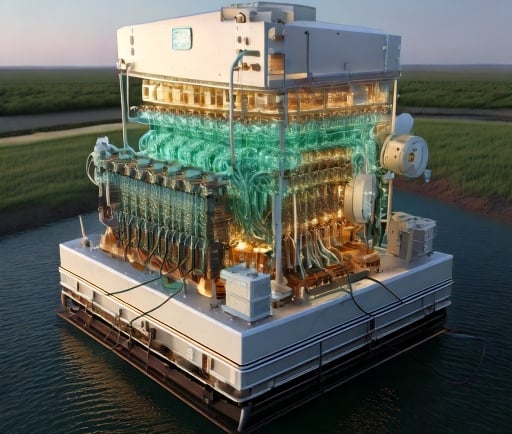Innovative Hydrovoltaic Cells: Harnessing Heat for Electricity in Arid Chinese Deserts


Introduction to Hydrovoltaic Technology
As the world grapples with the challenges of climate change and energy scarcity, innovative solutions are emerging to address these pressing issues. One such groundbreaking technology is hydrovoltaic cells, which have recently been developed in China. These cells utilize heat to generate electricity, making them particularly valuable in arid environments where water resources are limited.
How Hydrovoltaic Cells Function
Hydrovoltaic cells work by converting thermal energy into electrical energy, providing a sustainable power solution without relying heavily on water—an essential resource in desert regions. By efficiently harnessing heat from the sun, these cells can generate electricity even in areas where traditional photovoltaic systems may struggle due to insufficient water supply for cooling or maintenance.
Specifically, these advanced cells incorporate materials that can absorb heat and convert it into electrical energy through a process similar to thermoelectric generation. This innovative design addresses the dual challenges of energy production and water scarcity, allowing for the deployment of renewable energy generation in some of the most inhospitable environments.
Impact on Sustainable Energy Initiatives
The introduction of hydrovoltaic technology represents a significant leap forward in the quest for sustainable energy solutions. China's advancements in this field have the potential to revolutionize energy generation in desert regions, which are often overlooked in traditional energy planning. By utilizing hydrovoltaic cells, it is possible to generate clean energy without the extensive water usage typically found in traditional energy production methods.
Furthermore, these cells could play a vital role in supporting local communities by providing reliable electricity in remote areas, thus enhancing their quality of life and economic opportunities. With the growing demand for renewable energy sources, China's development of hydrovoltaic cells is not only a technological triumph but also a step toward a greener, more sustainable future. The potential for replicating this technology in other arid regions worldwide is immense, paving the way for additional innovations in the renewable energy sector.
Conclusion
In conclusion, China's development of hydrovoltaic cells that transform heat into electricity using minimal water marks a significant milestone in renewable energy technology. This innovation holds the promise of addressing energy needs in some of the world's most arid regions, facilitating sustainable growth without depleting essential water resources. As hydrovoltaic technology continues to advance, it could inspire new approaches to energy generation globally, ushering in a new era of eco-friendly and sustainable energy solutions.
